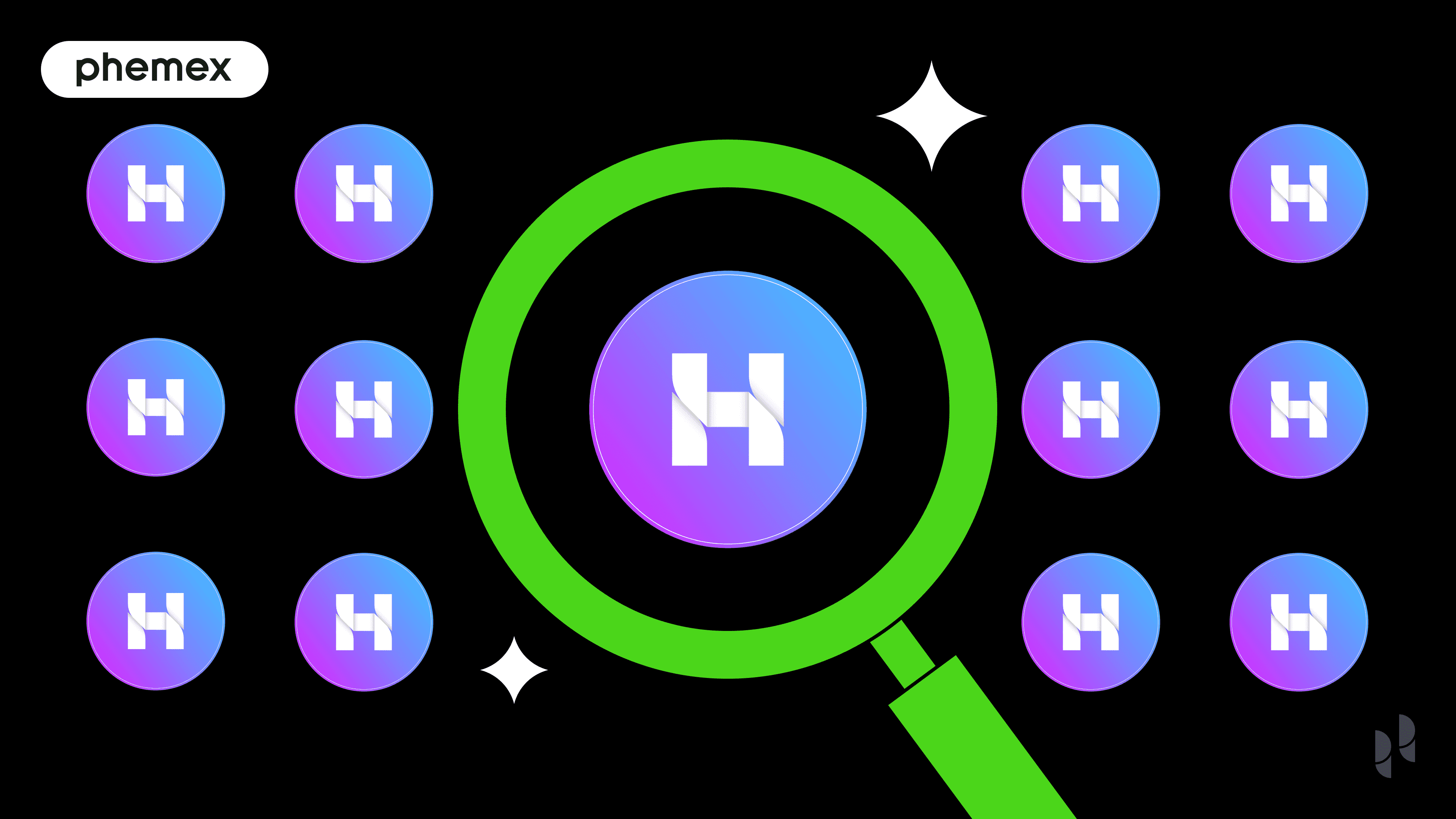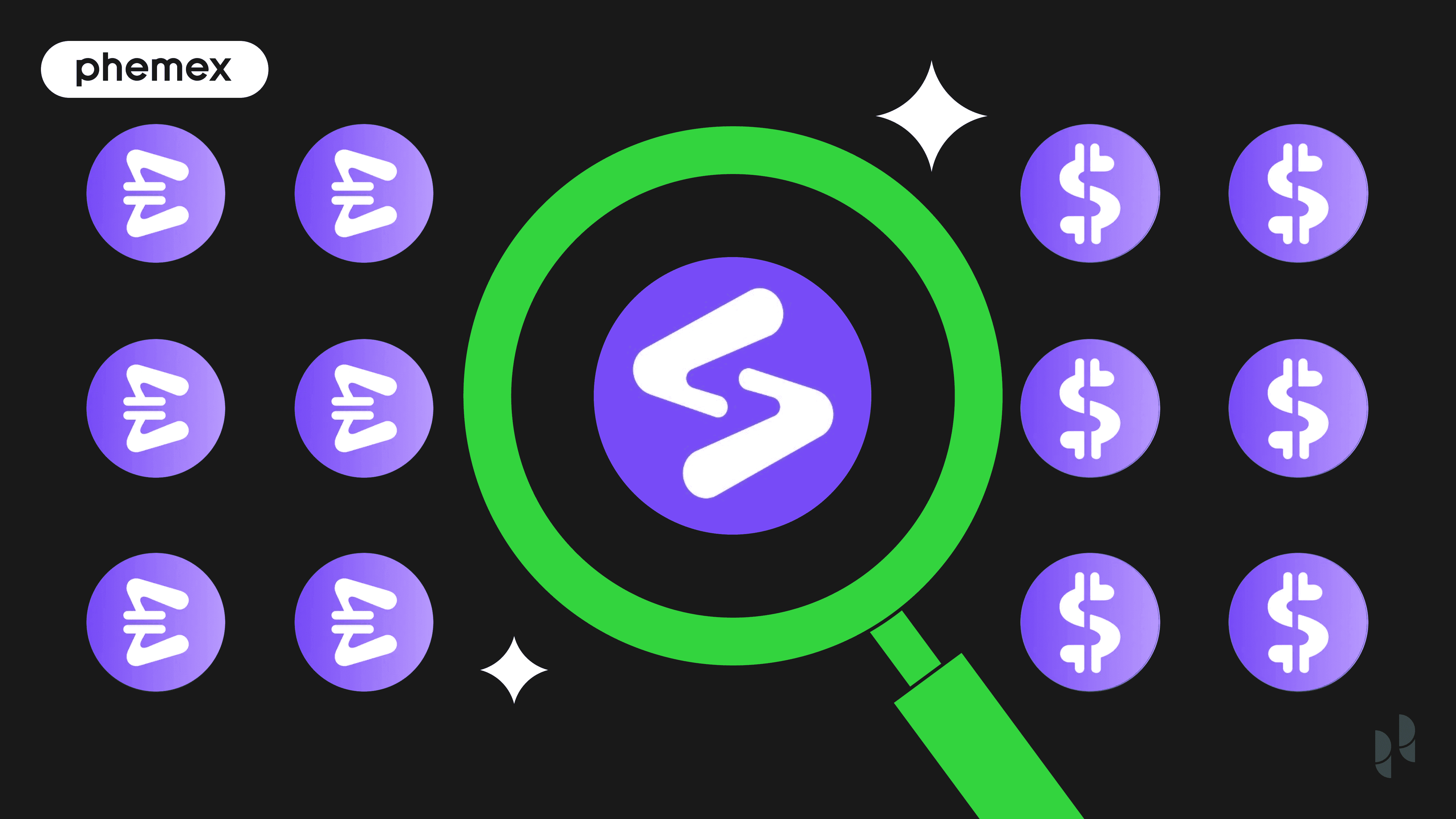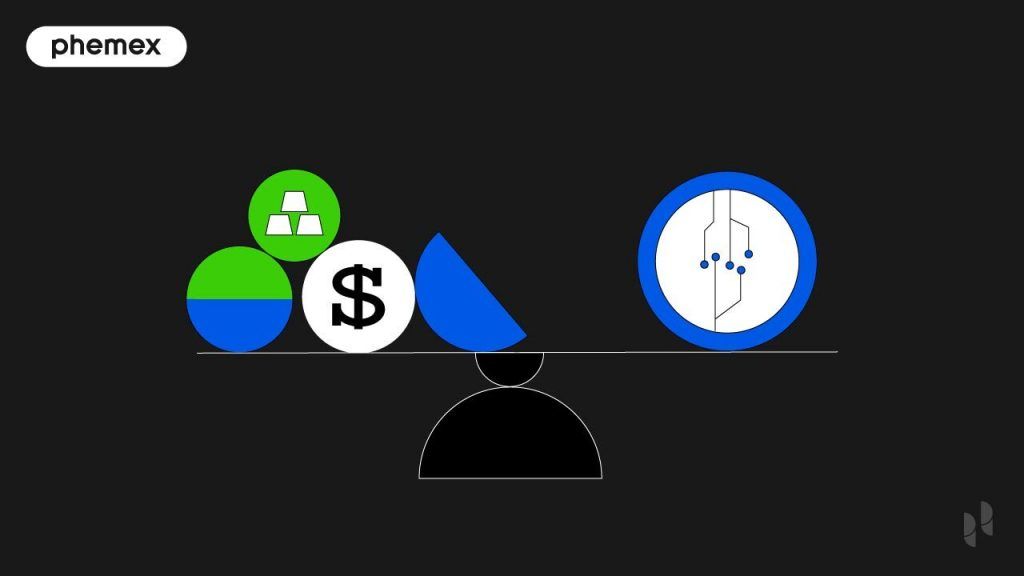Summary
- USDT (United States Dollar Tether) is a cryptocurrency token issued on multiple blockchain protocols.
- USDT’s aim is to maintain a stable valuation, which allows it to be used as a safe mode of storage and a steady medium of exchange, instead of being a speculative form of investment.
- You can buy USDT on a crypto exchange with your own credit card or using other crypto assets.
USDT (United States Dollar Tether) is a cryptocurrency token issued on multiple blockchain protocols. It is a stablecoin, that is, a type of cryptocurrency designed to maintain a stable or unchanged market value as the asset to which it is pegged.
In the case of USDT, its market value is pegged to the US dollar. Other stablecoins such as EURT (pegged to the Euro) and CNHT (pegged to the Chinese Yuan), are also designed to maintain stable price valuations.
Popular cryptocurrencies like Bitcoin (BTC) and Ethereum (ETH), are constantly exposed to wide swings as observed in their market prices. Unlike these, USDT’s aim is to maintain a stable valuation, which allows it to be used as a safe mode of storage and a steady medium of exchange, instead of being a speculative form of investment.

What is Tether (USDT)?
Tether (used interchangeably with USDT) was first launched in 2014 by Tether Limited, a company that operates and issues blockchain-based assets. All assets issued by the company are linked to the market price of traditional fiats. Since its launching, Tether USDT has become the world’s most used stablecoin and continues to grow in popularity. It has achieved this despite some controversy that surrounded it at the initial stages of the project.
These days, Tether’s popularity is primarily driven by its ability to provide liquidity and a hedge against market volatility, living up to its name as a tethered stablecoin.
How does Tether (USDT) work?
Tether works as a digital token built on multiple blockchain protocols including Bitcoin, Ethereum, Algorand, OMG, EOSIO (EOS), Tron (TRK), and SLP blockchains. These available options allow for more assets to be created on their native blockchains. In fact, the Ethereum blockchain currently holds the largest market for USDT.
To know more about the alternatives to Bitcoin, Read Altcoins Explained
To better understand how USDT works, we must consider how it’s created. Tether was originally issued on the Omni Layer Protocol. The Omni layer protocol is an open-source and decentralized asset platform built on top of the Bitcoin blockchain. This blockchain-based technology makes it possible for Tether Limited to mint and burn tokens under its custody based on the amount of fiat-reserves (USD) that must match the supply of USDT.
In theory, every single token has a matching US Dollar stored as collateral in the company’s reserves. According to Tether Limited, it is technically possible for the total number of tether tokens in circulation to be traceable and reported via the protocol. However, this claim has propagated one of the biggest criticisms about USDT, which is their lack of willingness to undergo a full audit.
What makes Tether (USDT) so important
Basically, Tether’s primary purpose is to provide a hedge against market volatility. If you’re still new to the world of crypto, you’ve probably learned that market volatility makes cryptocurrency trading a very risky adventure.
The simple way to explain volatility is to describe it as the extent to which an asset’s price fluctuates over time. In other words, crypto assets are volatile because their prices tend to move aggressively and unpredictably up or down at any time.
Why should you buy USDT?
1 Price stability
Price stability is the reverse of price volatility. Hence, Tether is designed to provide price stability for investors and traders, becoming the best alternative to fiat. It eliminates risks, complications, and potential pump and dump events often linked with other cryptos.
To clarify these risks, consider the following scenario between you as a merchant and a foreign customer
- Customer sends you 1 BTC worth $18,000 in exchange for goods
- After receiving, BTC price shockingly falls the next hour by 10%
- You are at a loss due to the unstable price of BTC
Because Tether enables the transfer of real cash into digital cash, a payment in USDT ensures you get almost the exact fiat value of your crypto without taking any loss.
2 Extra-fast transaction time
Using Tether makes business transactions faster. It eliminates the lengthy duration of time it takes to complete a transaction using USD fiat. Traditionally, it takes between 1 to 4 business days to complete a USD transaction using most banking systems. On the other hand, USDT transactions are completed in a matter of a few minutes.
3 Very attractive transaction fee
Tether transactions involve very minimal fees. Transferring USDT is much cheaper than employing Society for Worldwide Interbank Financial Telecommunication (SWIFT) transfers. SWIFT charges upwards of $20 to $30.
You also risk paying extra charges if you use a non-supported fiat currency on SWIFT. These include conversion fees and paying a certain percentage on transfers.
4 Security and Transparency
The Tether platform is built on top of blockchain technology. Worldwide, financial bodies recognize blockchain to deliver one of the most secure and transparent data technologies that can be relied on while meeting international compliance standards and regulations.
How to buy USDT
You can buy USDT on a crypto exchange with your own credit card or using other crypto assets. For instance, an exchange platform like Phemex provides a safe and instant way to purchase USDT with a credit card or with Bitcoin, Ethereum, or any other supported cryptos.
How to store USDT
You need a USDT wallet to keep your asset secure. But then, what is a USDT wallet? Simply put, a USDT or tether wallet is a secure digital tool that lets you interact with (this includes storing, reading price balance, and sending) your assets.
There are different types of wallets available to use. Some of these wallets are downloadable software applications for mobile use. Some are web-based, and currently, we have hardware wallets.
Learn more about the types of digital wallets at What are Crypto Wallets
The most commonly used wallets – mobile-based, come with unique public address which you can use to receive funds from others. A popular Ethereum-based (ERC-20) USDT address begins with “Ox…”.
Like a traditional bank account number, this address identifies you as the owner and receiver of the funds. These wallets also provide you with a personal Private Key for accessing and spending your USDT funds.
NOTE: It is a prerequisite that you provide your USDT address to buy USDT on an exchange.
WARNING: Once your fund is transferred to your USDT wallet, you must secure your private key in order to keep your funds from being stolen. Anyone with the private key can transfer or spend your tether funds.
What can you do with USDT after Buying it?
There are many things you can do with USDT. These include;
1. Hodl or store it in the crypto wallet
You may decide just to hodl your Tether in your wallet and wait for the right opportunity to trade it. Phemex is a secure place to hodl your tether tokens. The exchange utilizes cold wallets, which is in theory safer as funds and keys are not accessible through the internet.
2. Send or transfer USDT tokens
You can easily send or transfer your tether tokens anywhere around the world. It’s a fast and cheaper way of moving money.
3. Spend or buy things with it
Many businesses now accept Tether as a viable and reliable payment option, especially because it is pegged to the US dollar.
4. Trade USDT for fiat currency or other crypto assets
You can easily convert your tether to real cash. Also, you can convert tether tokens to any other cryptos. For example, Phemex lets you trade USDT for Bitcoin, Ethereum, and more.
5. Donate USDT tokens
Many charity organizations around the world accept Tether as donations. As a stablecoin, USDT lets you see the exact fiat equivalent amount you want to donate without the hassle of foreign exchange rates, especially if you’re donating to an international organization.
USDC vs USDT – what are the differences and similarities?
USDC or USD Coin is another US dollar-pegged type of stablecoin similar to USDT.
It has the same characteristics and can serve as an alternative to USDT.
The two projects share many things in common. The most noticeable denominator between them is that they are both stablecoins. Apart from that, they also share some other similar values, which include:
- They are both controlled by a central issuing company that regulates and holds custody of their circulation. While Tether Limited is responsible for issuing USDT, USDC is maintained by Circle Limited and Coinbase.
- Like USDT, USDC can be purchased with a credit card or traded with Bitcoin, Ethereum, and other cryptos.
- The primary ledger they are issued on is the Ethereum-based (ERC-20) blockchain. Both are also available on multiple other platforms.
Want to know more?
All you Need to Know about USDT vs USDC
Controversy of USDT
Serious questions were raised in the crypto community about the legitimacy of Tether tokens. Tether Limited claimed that its over 19.7 billion tokens currently in circulation are 100% backed by Tether’s USD cash reserves. In essence, the company claimed that each USDT in circulation is backed 1:1 by a dollar or cash equivalent in reserve.
However, many critics have bemoaned Tether’s inability or unwillingness to verify this claim. Here’s why.
In November 2017, Tether Limited allegedly announced that a hacker siphoned nearly $31 million worth of Tether from its treasury wallet. A couple of months later, the company’s necessary audit to ensure the appropriate sum of real-world assets in reserves never happened. Instead, it parted ways with the audit firm. Tether also refused to disclose its banking relationship with Deltec Bank, Bahamas.
In October 2018, Tether limited announced in a letter that it has approximately $1.8 billion in reserves with Deltec Bank. Such funds were supposedly enough to cover every Tether in circulation back then. Yet, the company refused to submit to a formal audit by a reputable firm.
In April 2019, Tether Limited’s parent company and owner of Bitfinex exchange, iFinex Inc, was accused of hiding a loss of $850 million corporate funds from its investors and clients. Court filings revealed that Bitfinex allegedly took some $700 million from Tether’s cash reserves, tied up in Crypto Capital.
The controversy around Bitfinex and some other related stories, including Tether’s inability to conduct necessary account audits, is particularly troubling. Please do your own research and always exercise caution when transacting with any crypto asset.
Read More
- USDC vs USDT: Which Is The Better Stablecoin to Use?
- What Is TrueUSD (TUSD)? A Regulated USD-Backed Stablecoin
- What is USD Coin (USDC)?
- All You Need to Know About Stablecoins: Cryptocurrency’s Gold Standard
- Tron’s TRC-20 Tokens – All You Need to Know
- TerraUSD (UST): The Stablecoin That Made LUNA Successful
- What is Cryptocurrency & How It Differs From Digital Cash
- December BTC Market Analysis









